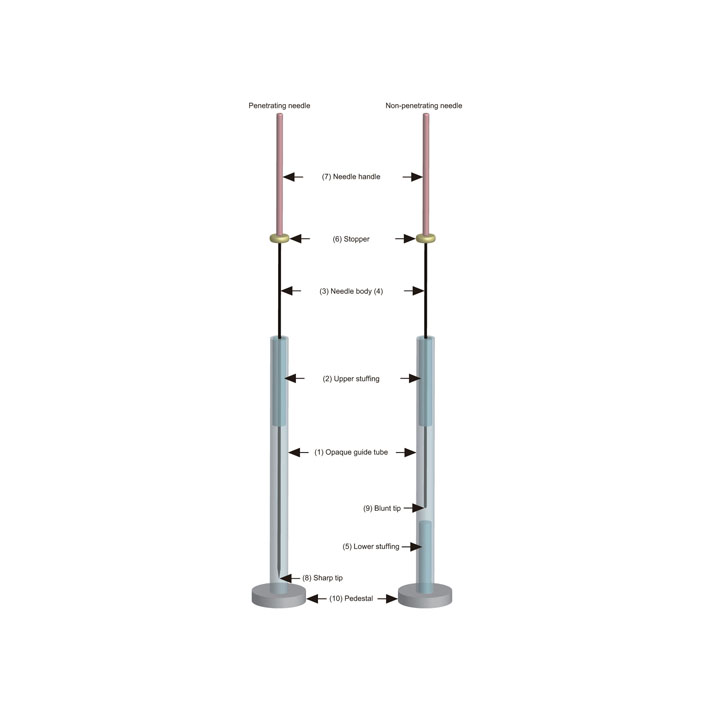JAM掲載論文検索
| Japanese Acupuncture and Moxibustion (Online) |
| 2010; 1: 80-91 |
| A possible double-blind (practitioner-patient masking) acupuncture needle |
| Takakura Nobuari1,2,3,4), Takayama Miho 1,2,3,4), Kawase Akiko1,2,3,4), Yajima Hiroyoshi 1,2,3,4) |
| 1) Department of Acupuncture and Moxibustion, Faculty of Health Sciences, Tokyo Ariake University of Medical and Health Sciences, Educational Foundation of Hanada Gakuen 2) Second Department of Physiology, Showa University School of Medicine 3) The Foundation for Oriental Medicine Research 4) Hanada college, Japan School of Acupuncture, Moxibustion and Physiotherapy |
 |
| Figure 1 Double-blind placebo and matched needle (24-30). |
| Design of the double-blind acupuncture needles. Each needle assembly comprises an opaque guide tube (1) and upper stuffing (2) to provide resistance to the needle body during its passage through the guide tube. The body of the penetrating needle (3) is longer than the guide tube by an amount equal to the insertion depth, but the body of the non-penetrating needle (4) is long enough to allow its blunt tip to press against the skin when the needle body is made to advance to its limit. The non-penetrating needle contains lower stuffing (5) to give a sensation similar to that of skin puncture and tissue penetration. Both needles have a stopper (6) that prevents the needle handle (7) from advancing further when the sharp tip of the penetrating needle (8) or the blunt tip of the non-penetrating needle (9) reaches the specified position. The pedestal (10) on each needle is adhesive, allowing it to adhere firmly to the skin surface. The diameter of the needles in this series of studies was 0.16 mm. There should be no problem with use on the toes, fingers, and scalp 4. It may be necessary to shave hairy skin sites to ensure firm adhesion. Insertion depth is adjustable realistically from 1mm to 30 mm. Insertion direction is adjustable by altering the angle of the lower end of the guide tube. A penetrating needle with a stopper can enable acupuncturists and patients to avoid, in almost all cases, inadvertent risks to insert the needle deeper than is safe and therefore unnecessary tissue trauma. Use of a guide tube has added advantages as the sterility of the single use needle is maintained so preventing disease transmission from patient to practitioner and from practitioner to others because the needle body of the penetrating needle is enclosed in the guide tube before, during and after use. The needle is safe as the depth of insertion is restricted by the stopper. |